The last days of May and the first few weeks of June are should be considered late-spring, but I think most of us view this part of the year as very early summer. The weather is for the most part starting calm down and settling into a summertime groove. Memorial Day weekend is considered by most as the unofficial start of summer.
In my garden, the signs of summer’s arrival are becoming ever more evident. In the picture below, the tulips of mid-spring are fading away to be replaced by the impeding blooms of the irises.
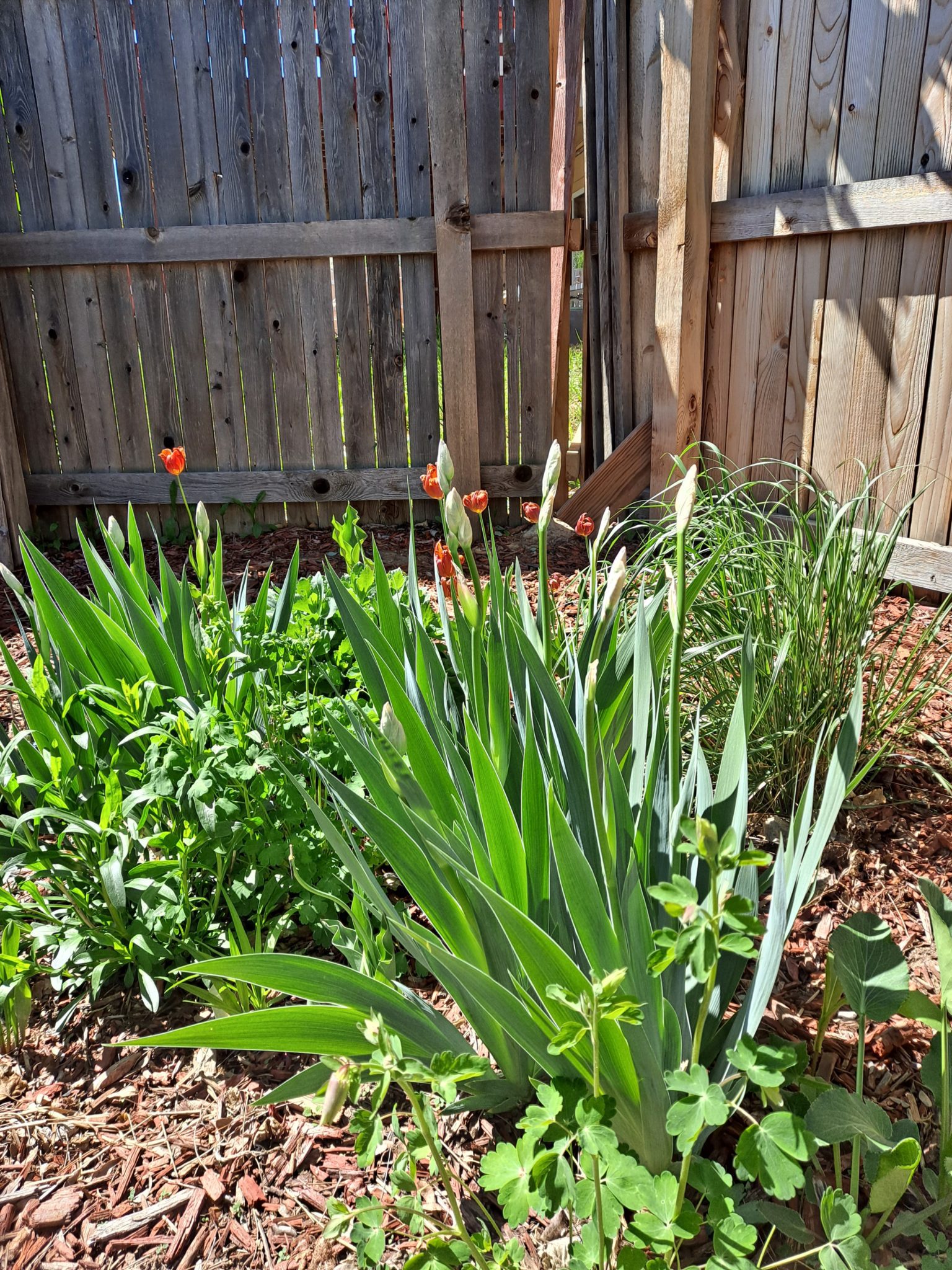
Irises and Memorial Day in my mind are synonymous. My mom used to grow irises in her garden so she could take them to my grandparent’s gravesite on Memorial Day. I always thought she loved irises, but found out later in life that she actually kind of indifferent to them. Her real love was roses. She grew irises because here along most of the Front Range of Colorado irises reliably bloom around Memorial Day.
—————————————————————————————————————
Elsewhere in the garden, I finally tackled a project I have been dreading and have been putting off for far too long. I have several Miscanthus ornamental grasses in my garden, and they provide awesome autumn and winter interest. If you’re a regular reader, you’ve seen the picture below several times. But I like using it because it shows just how dramatic this grass can be.
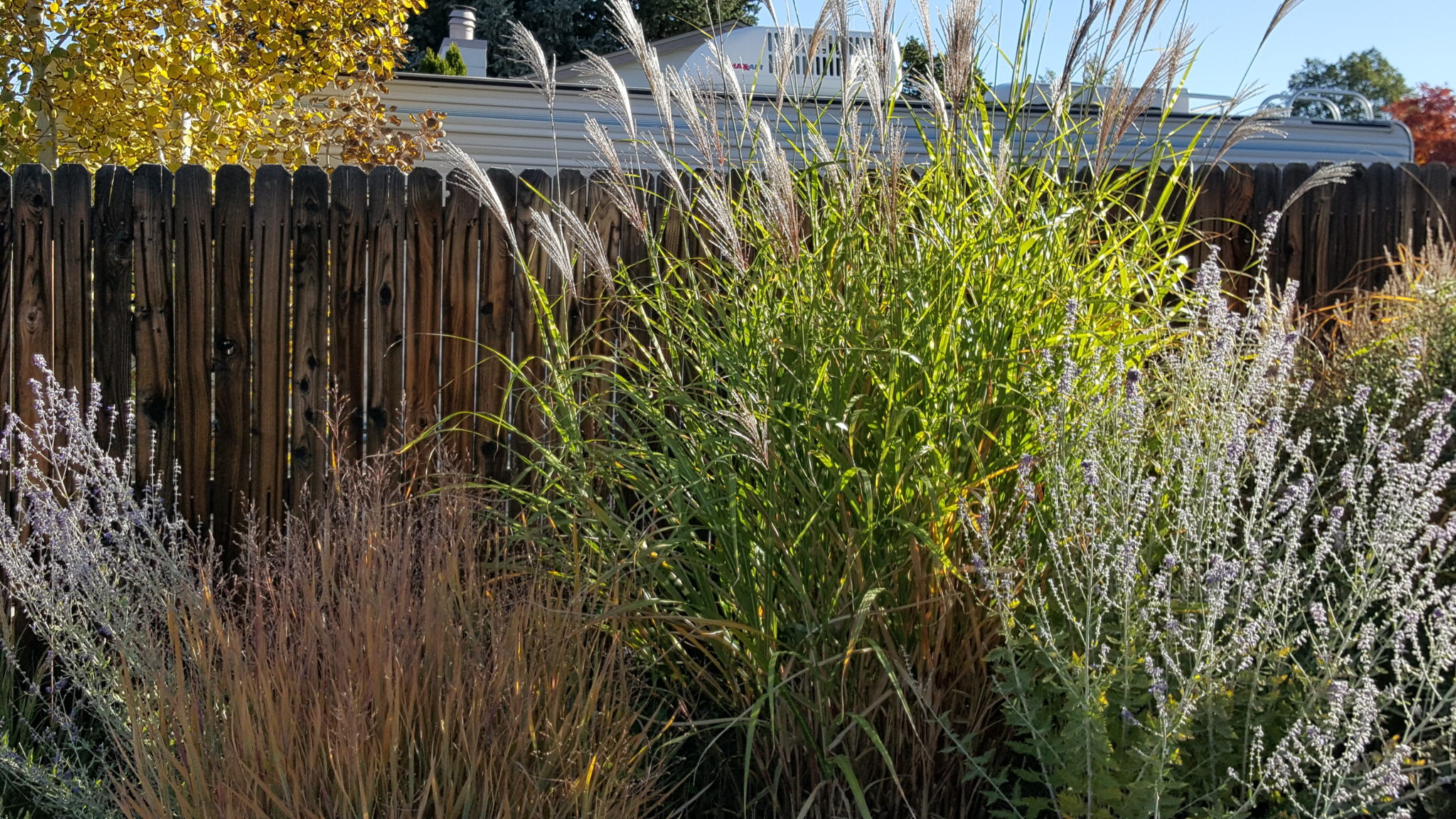
However, one of the downsides of Miscanthus is that over time it develops a dead spot in the middle of the clump. When this occurs, the grass blades spring up around the edge of the dead spot and the grass loses some of its vigor. Over the years the dead spot grows ever larger.
One way to combat this is when the dead spot is first observed, take a shovel or post hole digger and dig out the spot and plop in a smaller grass of the same type. This was never an option for me, because I long ago forgot which particular Miscanthus this is. I guess should I probably be keeping better track of what I grow where, but I think it’s a little late for that now.
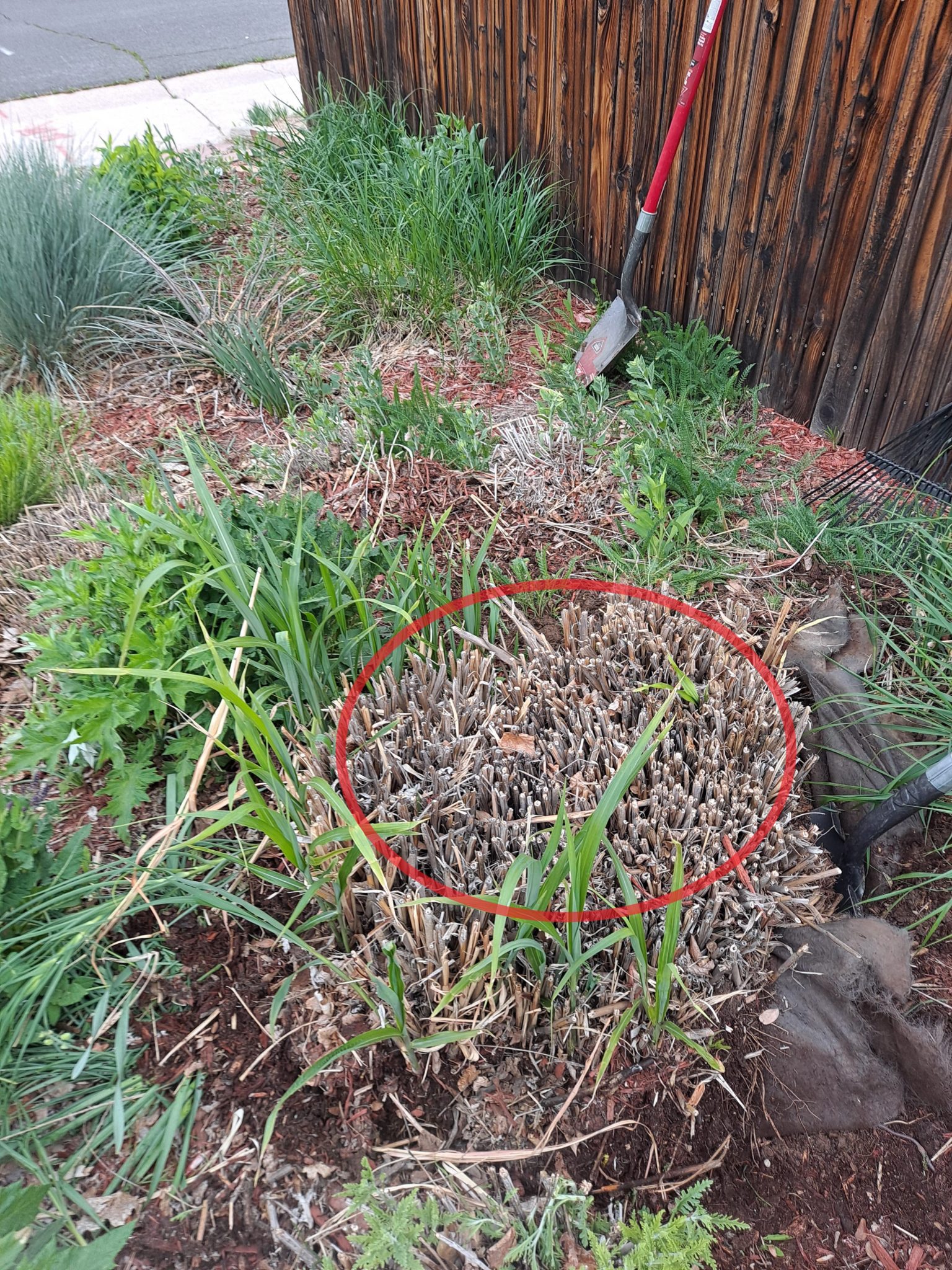
So, since I couldn’t plop in a similar grass into the dead spot, I had to dig up the clump and divide it. Besides, I have procrastinated for so long that the dead spot was far too large for me to use the plop in another grass technique. Nope, it was the hard way for me!
One thing I want to point out: when dividing an ornamental grass such as Miscanthus, you want to wait until you see signs of growth. That way you know which part is alive and which part is dead. Otherwise, you made divide the grass and plant the dead zone. Not good.
After an hour of digging, bleeding and swearing, I finally got the damn thing out. Imagine my shock when I discovered that most of the plant’s roots were growing in just a few inches of dirt that lay on top of landscape fabric!
Considering that this particular border gets almost no supplemental water and lies along a south facing fence, that gives you some idea of just how tough this grass really is.
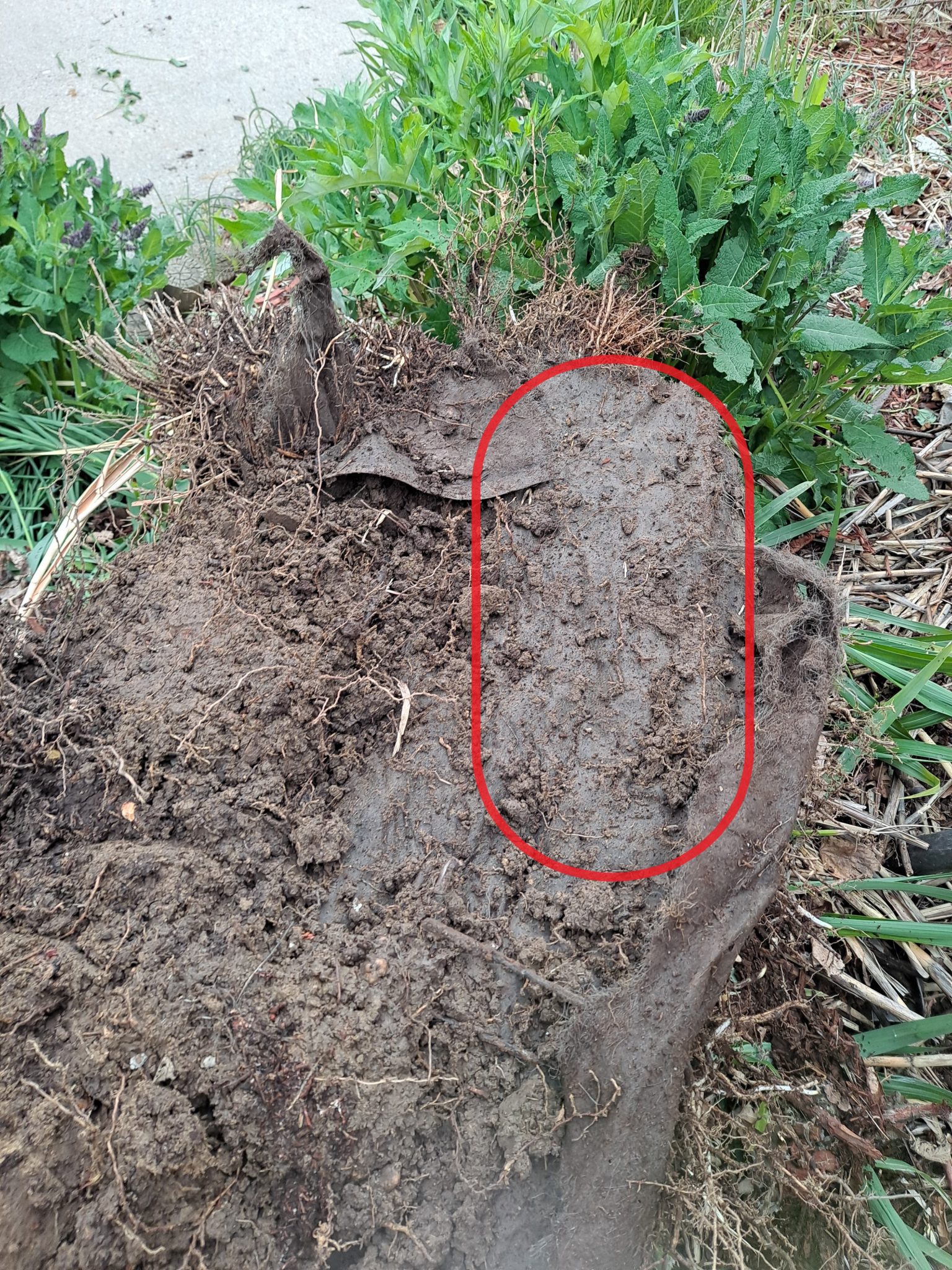
I had to chop out (literally) the viable plant from the dead spot. To cut through the tough, fibrous roots required the use of an axe. Once this task was accomplished, I was left with enough roots to support two plants.
After dumping a bunch of compost in the old hole (and after removing a lot of the old landscape fabric), I put one of the divided grasses back into its old home. It looks a little worse for wear, but I feel pretty confident it will bounce back shortly.
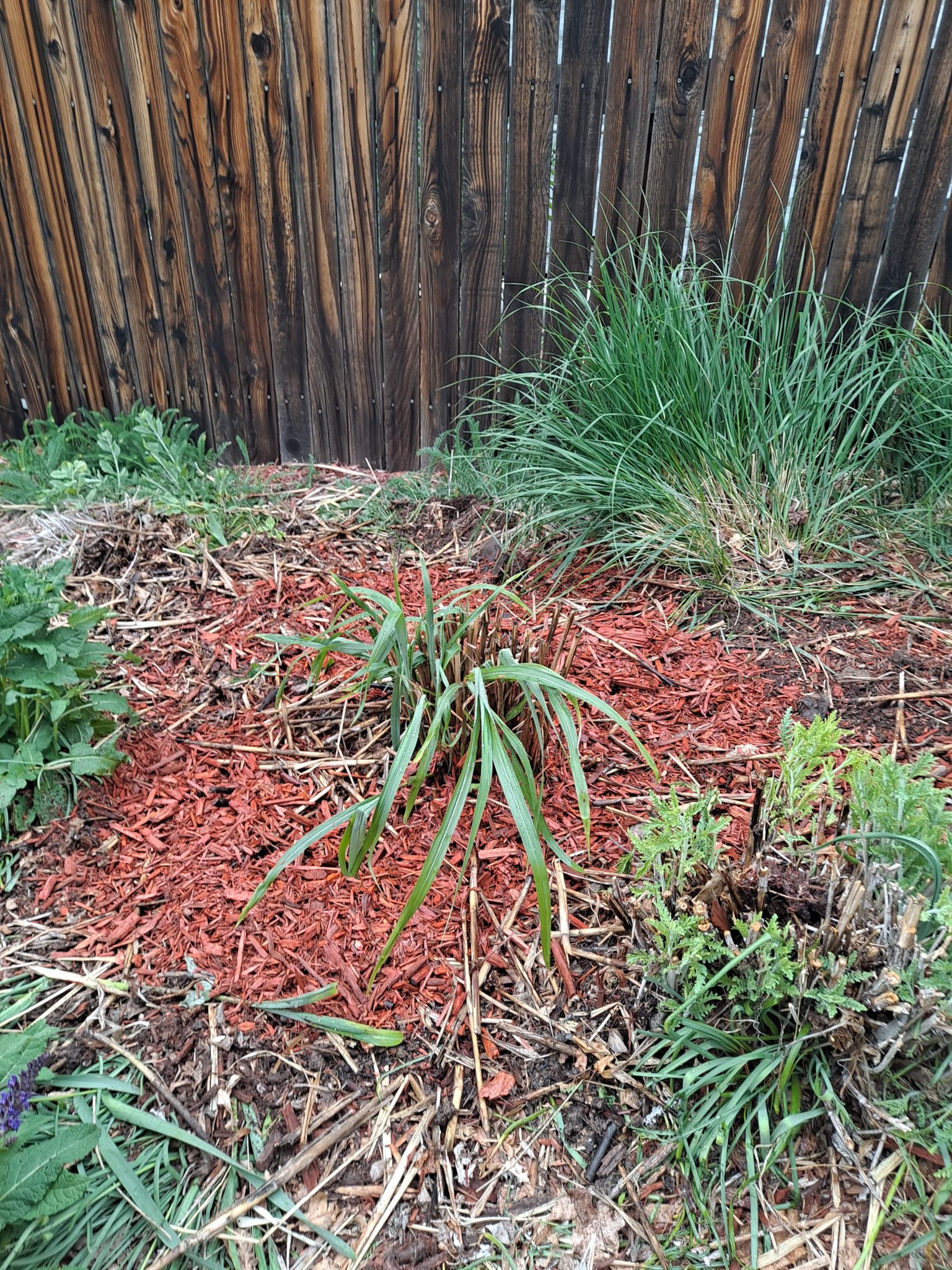
The other clump required a new location. Fortunately, there was a bare spot in the same border just crying out for something to fill it. So I pulled up more landscape fabric, dug a hole, dumped in a bunch of compost and put the clump in its new home.
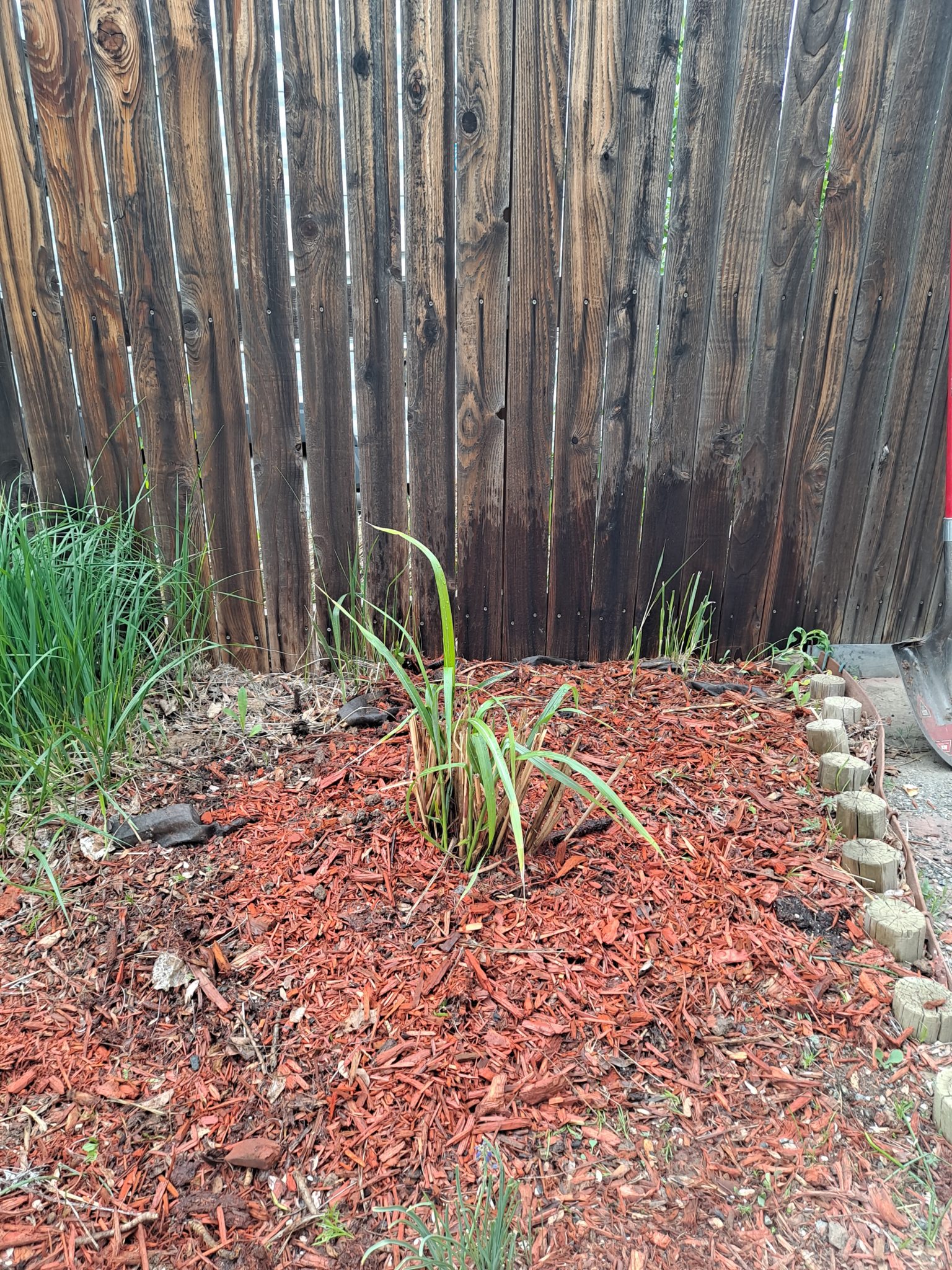
I want to note that not all ornamental grasses acquire dead zones. Most ornamental grasses are pretty low maintenance, requiring nothing more than an annual haircut. But most Miscanthus do require dividing every few years.
I’ve got a couple more Miscanthus grasses elsewhere in the garden that I want to divide this spring, but I am hopeful that they will not be as daunting a task as this one was. We’ll see.
Anyway, I have learned my lesson: when I see a dead spot in my ornamental grasses, the time to divide them is immediately.

